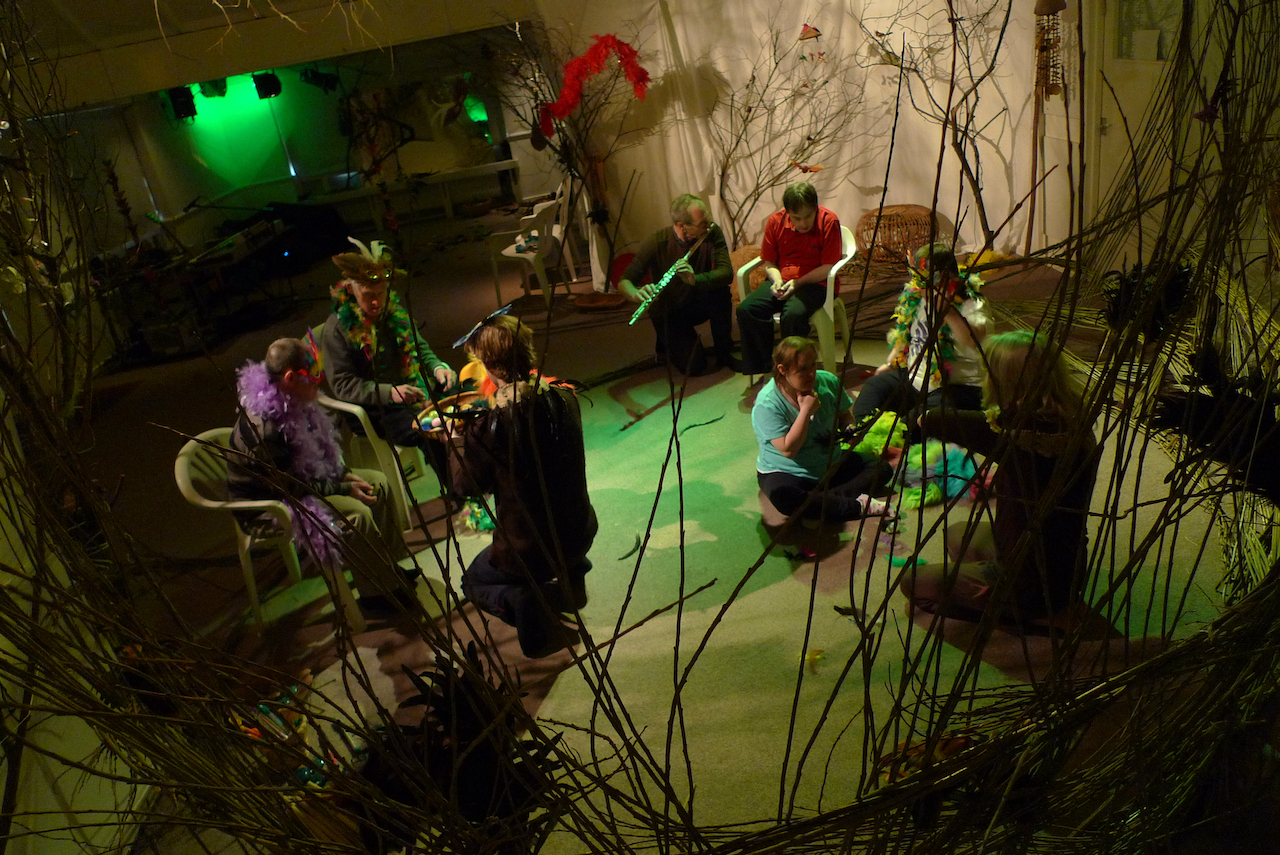Weaving
An activity based around weaving,
can offer access to all abilities. It can be an individual or social activity, whether that be actually
creating a woven pattern or simply enjoying the textures of the chosen
articles. Weaving activities can be used to decorate a whole space or an object
in the space, on a simple frame encouraging fine-motor skills. In all cases,
ensure that the resources have inspiring visual and tactile qualities to
encourage engagement by all participants.




Working with
larger structures gives opportunities for social interaction and cooperation.
Long strings or netting stretched across the space will create a giant loom.

A large withy structure, such as a giant nest or dreamcatcher creates a frame for participants to add to. Your weaving materials will depend on the subject.

Long hanging cloths in the space create a loom for bodies to weave through. When covering large areas, remember to make everything accessible to wheelchair users as well.

Using smaller frames creates more intimate spaces where participants can decorate their own areas, and enables increased focus and concentration.

Using ribbons and wool in a variety of colours, lengths
and thickness gives opportunities for
making choices, identifying preferences and feeling part of the process,
particularly for those that can’t necessarily weave themselves. Stripped plastic or space blanket can offer
different textures and respond to the light in unique ways. Strings of beads have
sound qualities and also encourage movement.




Feather boas and or scarves of varied colours
and textures provide instant lengths that can be woven through frames.
Battery operated lights can be attached to
weaving resources or simply strung through netting themselves to add another
dimension to the work.
Grasses and reeds, so often used for weaving
baskets and hats, provide an alternative resource.


